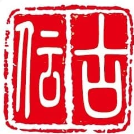I'm sorry if i sound presumptuous, that wasn't my intention. Just i studied Muramasa and his works for a while and what i see on this blade doesn't look anything like his workmanship. He made hitatsura, but never this picturesque and regular. Hada doesn't fit either.
What i said about the papers wasn't against you, since you said yourself that this is suspicious, is just a general raccomandation. I always doubt of papers on mumei blades, even NTHK or NBTHK, after all is just an educated guess
And about the certificate doesn't seem Fukunaga's http://www.shibuiswords.com/papers1.htm



